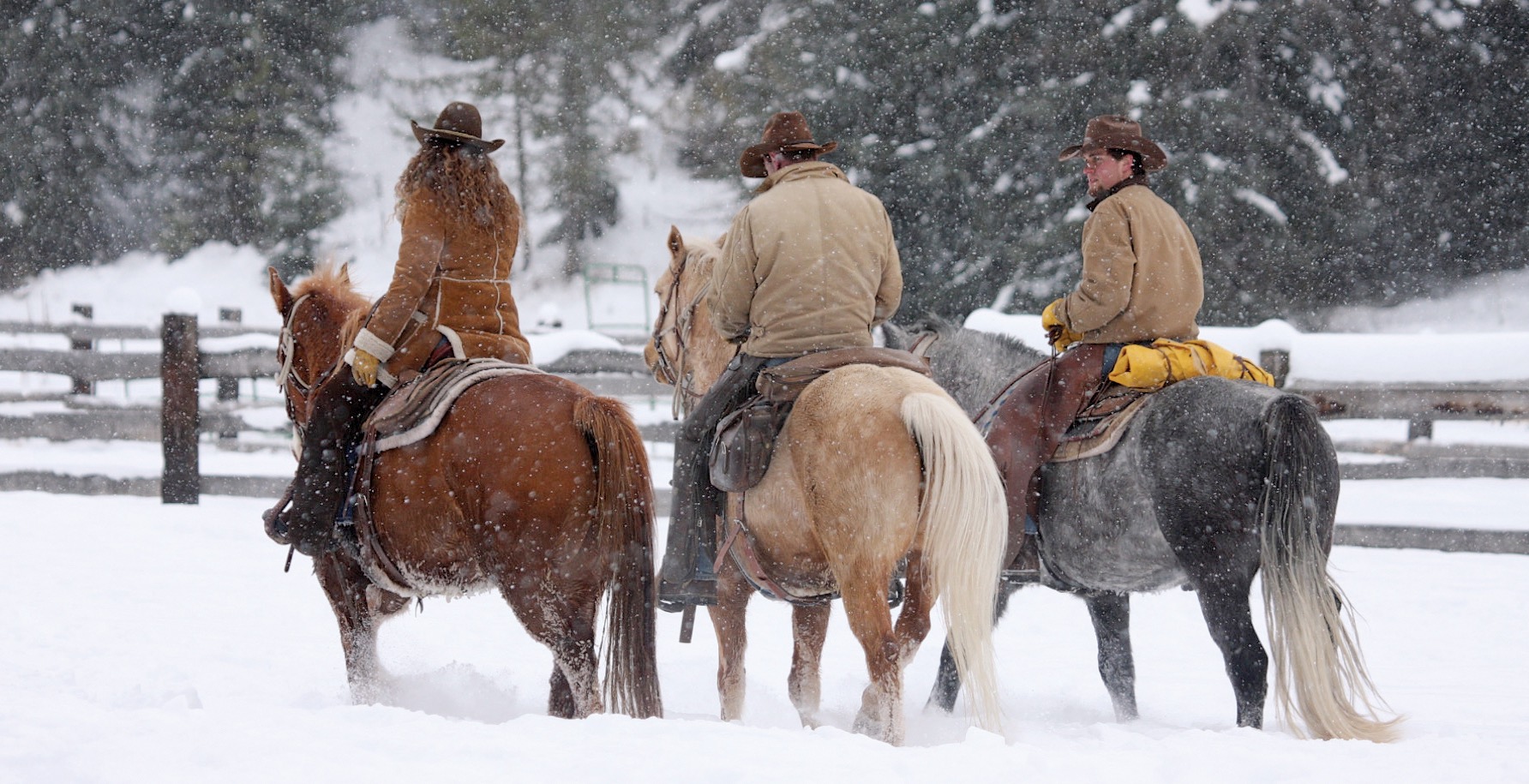
Are you a fair-weather rider? Or do you love to log saddle time even when the weather is frosty? Here are our essential tips for winter riding fun with your horse.
1. Take it easy.
When the weather’s cold and the ground is hard (and perhaps snowy), focus on staying safe and comfortable, and simply enjoying the moment. A quiet walk through a snowy field can be as satisfying as a gallop if you use all your senses to be fully aware of the scents, sounds, and vistas of your ride.
Be aware, too, that riding through snow, especially if it’s deep, can be tiring for your horse—another reason to take it easy. And because post-ride cooldowns can be problematic in frigid temps (more on that in a moment), keeping your horse from working up a big sweat just makes good sense.
Obviously, for safety’s sake, never ride over icy or otherwise slippery footing. Also, in snow, stick to areas where you know the lie of the land underneath.
[RELATED: 7 Winter trail-riding hazards.]
2. Plan to stay warm.
The goal is to be toasty but not to break a sweat, as dampness can lead to a chill. Dress in layers you can add or subtract as needed during your ride. Good gloves are essential; and you’ll be happy to have ear warmers under your hat or helmet.
Waterproof, insulated riding boots will help ward off that I-can’t-feel-my-toes feeling. (Be sure whatever boot you wear is riding-safe, though, with a decent heel and a tread that won’t hang up in the stirrups.) Chaps can be an extra wind-shield for your legs.
For the coldest days, gel-packet hand- and foot-warmers can provide delicious heat for the duration of your ride. (Find them at sporting-goods stores or at Amazon.com.)
[MORE TIPS for great winter-riding apparel-layering.]
3. Do extra warm-up, cool-down.
Your horse’s muscles and tendons require additional time to warm up in frigid temperatures, before you start asking him to struggle through snow.
After your ride, towel-dry any sweat he may’ve produced (again—ideally, not a lot), and make sure he’s fully dry before you turn him out and/or blanket him. (A winter blanket on a damp horse defeats the purpose of blanketing.)
[RELATED: Warm-up basics before any type of riding.]
4. Mind the feet.
We already talked about your feet, but if you ride your horse in snow, ask your hoof-care professional about the various ways of increasing traction and avoiding ice balls in his feet.
Options to keep snow and ice from accumulating include special shoes or hoof pads or the application of a nonstick agent (such as bacon grease or a commercial product) to soles.
For added traction, ask about a hard-surfacing material (such as borium) applied to shoes; studs affixed to shoes; the use of horseshoe nails with ribbed heads; or hoof boots with removable studs.
[CURIOUS? Here’s an example of equine ‘snow shoes.’]
5. Go bareback?
If your horse is comfortable being ridden bareback (and a cold day is NOT the right time to introduce it!), consider going without the saddle, especially for shorter rides. Your horse’s heat will help to keep you warm on your walk through the winter wonderland.
[PLAN IN ADVANCE: Bareback basics to prepare you and your horse.]
6. Be smart.
Wear UV-blocking sunglasses—ideally wraparounds—to protect your eyes from glare and wind. Keep yourself and your horse adequately watered, too, as cold weather can promote dehydration. A small snack, such as a protein or granola bar, can help you stay warm during your ride by revving your metabolism for digestion.
Don’t forget to warm the bit before bridling your horse—you want him to enjoy—not dread–your winter outings.
Finally, if your horse is new to snow, be aware of any signs during pauses in your ride that he’s thinking about rolling in it. I actually had this happen to me during my mare’s first outing in snow—she dropped so suddenly I could only focus on pushing free…then had to follow her back to the barn, on foot.
Forewarned is forearmed!
[MORE GREAT TIPS to help you warm up to winter riding.]
[READY? TEST YOURSELF! Ace these winter-riding trivia questions.]






